 Over the years, America has gone to war for a variety of reasons. The Revolution was about winning independence. In the War Between the States, it was ending slavery or defending state’s rights, depending on your point of view. World War I was “making the world safe for democracy,” and World War II was triumphing over some truly Bad Guys.
Over the years, America has gone to war for a variety of reasons. The Revolution was about winning independence. In the War Between the States, it was ending slavery or defending state’s rights, depending on your point of view. World War I was “making the world safe for democracy,” and World War II was triumphing over some truly Bad Guys.
But never in our nation’s 239 year history have we ever gone to war over an animal.
Yet we came frighteningly close to a trans-Atlantic conflict over one in 1859.
How did that happen? I’m glad you asked, because this story is every bit as fascinating as it is weird. So sit back and enjoy the bizarre, yet totally true, tale of the Pig War.
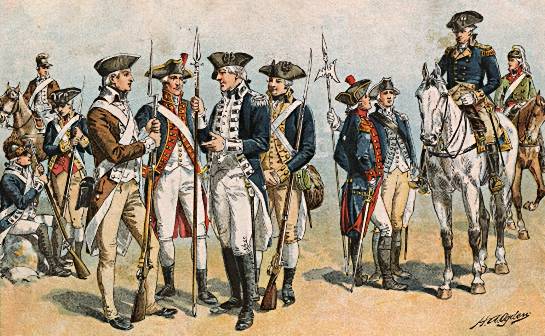 Back in the early 1800s, several countries eyed the Pacific Northwest. Fortunes were waiting to be made in the 3 F’s: Fishing, Forestry and the very lucrative Fur Trade. Britain claimed a big chunk of the region, and thanks to its colony in Alaska, even Imperial Russia wanted a piece of the action. We got into the game in 1803 when we bought the Louisiana Territory from France. Since America now extended into that neck of the woods, why not push it all the way to the Pacific? (The whole Manifest Destiny thing, remember?)
Back in the early 1800s, several countries eyed the Pacific Northwest. Fortunes were waiting to be made in the 3 F’s: Fishing, Forestry and the very lucrative Fur Trade. Britain claimed a big chunk of the region, and thanks to its colony in Alaska, even Imperial Russia wanted a piece of the action. We got into the game in 1803 when we bought the Louisiana Territory from France. Since America now extended into that neck of the woods, why not push it all the way to the Pacific? (The whole Manifest Destiny thing, remember?)
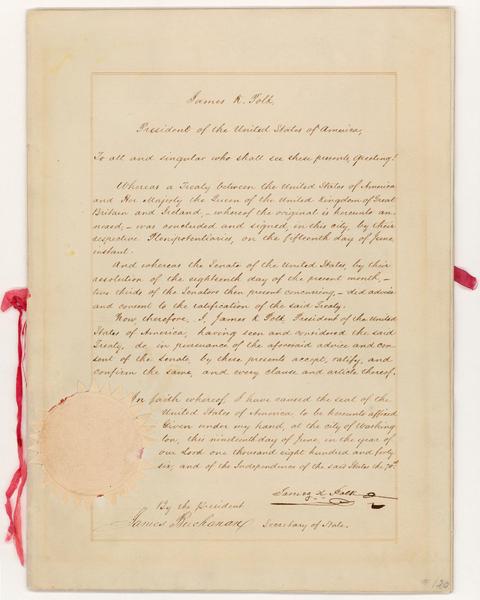 For several decades, we bickered with Britain over the precise border. The two countries finally ironed it out in the Treaty of Oregon.
For several decades, we bickered with Britain over the precise border. The two countries finally ironed it out in the Treaty of Oregon.
Except, they didn’t.
When the diplomats drew the international boundary, they relied on a map produced in 1789. It may have been state of the art cartography in the 18th Century, but its accuracy left a lot to be desired.
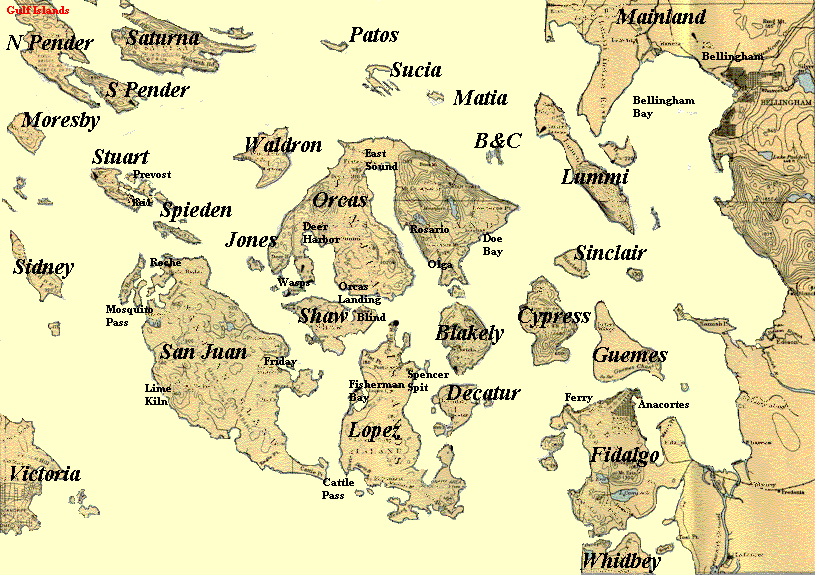 The Straight of Juan de Fuca separates modern Washington state on one side from modern Vancouver Island on the other. And smack in the middle of it sits San Juan Island. That old 1789 map was kind of fuzzy on the details, so the treaty’s wording about just who controlled the island was a little vague, leading Britain and the U.S. to each say, “It’s ours!”
The Straight of Juan de Fuca separates modern Washington state on one side from modern Vancouver Island on the other. And smack in the middle of it sits San Juan Island. That old 1789 map was kind of fuzzy on the details, so the treaty’s wording about just who controlled the island was a little vague, leading Britain and the U.S. to each say, “It’s ours!”
Americans and Brits both settled there. A large sheep ranch was the island’s principal industry, and for the most part everyone got along well.
Until the day the pig wandered into our story.
Ever had a neighbor who wouldn’t control their pets or other critters? Then you know how annoyed American Lyman Cutler felt. His British neighbor Charles Griffin (who was actually an Irishman), had several black pigs, and he let them roam and eat at will.
On June 15, 1859, Cutlar discovered one of them in his garden, eating his potatoes … yet again. He’d had enough. So he hauled out his gun and shot it.
Cutlar wanted to be fair, so he offered Griffin $10 for the pig. Griffin demanded $100.
Things quickly turned nasty.
Cutlar: “Your pig was eating my potatoes!”
Griffin: “It’s up to you to keep your potatoes out of my pig!”
(I’m not making this up; they actually shouted that at each other.)
Cutlar then said he wouldn’t pay a dime, because the pig had been trespassing.
So Griffin went to the British authorities, who threatened to arrest the American Cutlar.
This Gilbert and Sullivan farce was fast becoming a serious international incident.
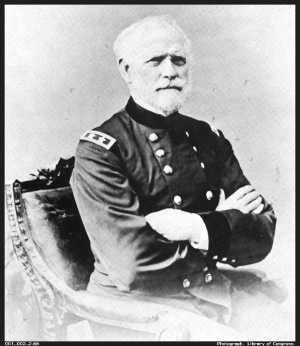 The Americans on the island turned to the U.S. Army for help. All Brigadier General William Harney did was help things go from bad to worse. He was a well-intentioned, doddering old gent whose best days were far behind him.
The Americans on the island turned to the U.S. Army for help. All Brigadier General William Harney did was help things go from bad to worse. He was a well-intentioned, doddering old gent whose best days were far behind him.
Harney felt obliged to protect the American flag. So he rushed 66 soldiers from the 9th U.S. Infantry to the island, commanded by Captain George Pickett. If his name sounds familiar, that’s because four years later he led one of the most disastrous assaults in American military history, a little thing called Pickett’s Charge in a little battle called Gettysburg.
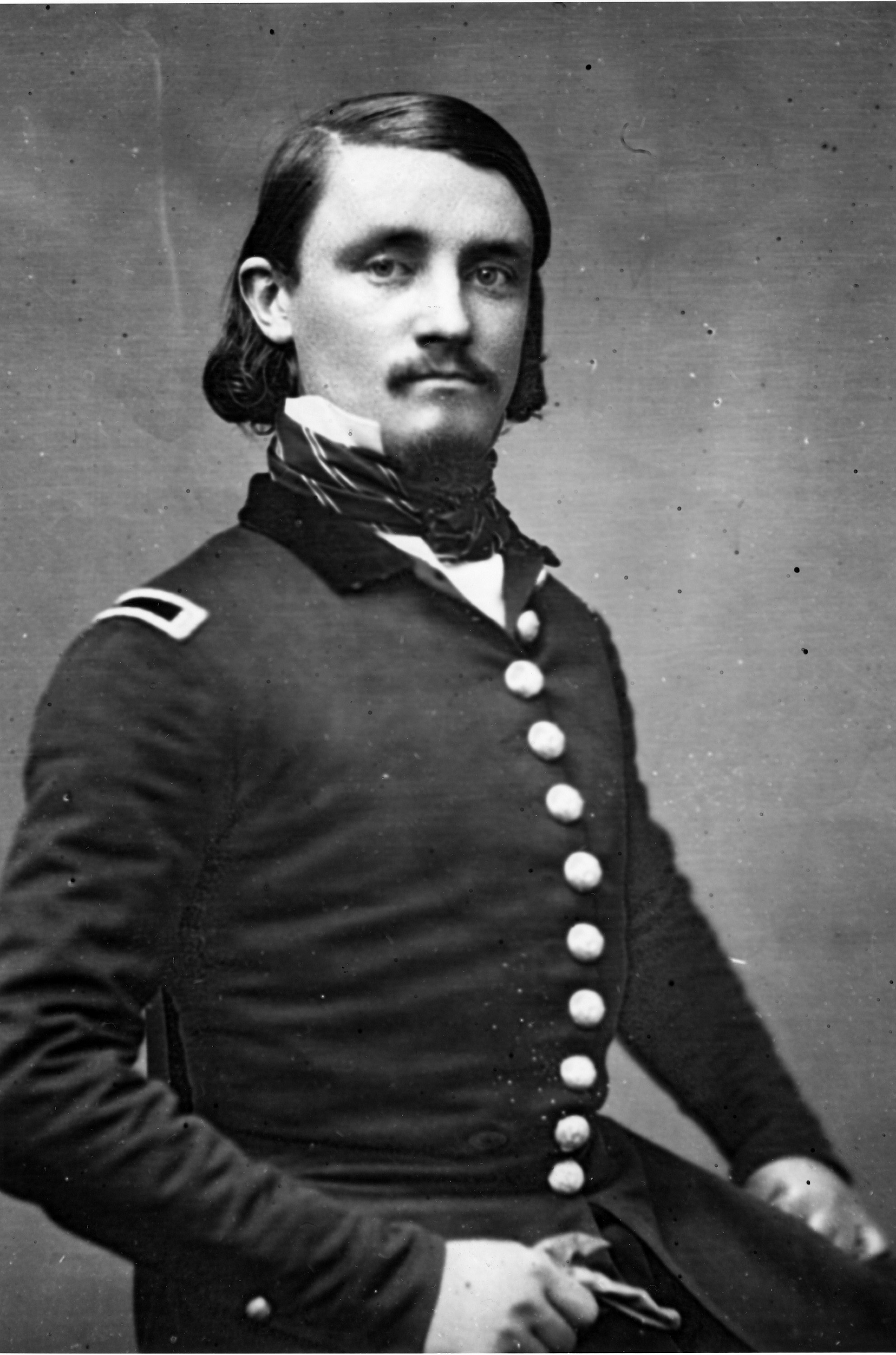 You’ve got to understand that Pickett was, deep in his heart, a perpetual 14 year-old boy. Which is why he announced with great bravado when he landed on the island, “We’ll make a Bunker Hill of it!” His allusion to one of the opening battles of the American Revolution (against the same people Pickett now faced), made headlines across the United States … although he apparently forgot the Patriots lost that battle.
You’ve got to understand that Pickett was, deep in his heart, a perpetual 14 year-old boy. Which is why he announced with great bravado when he landed on the island, “We’ll make a Bunker Hill of it!” His allusion to one of the opening battles of the American Revolution (against the same people Pickett now faced), made headlines across the United States … although he apparently forgot the Patriots lost that battle.
Now England’s honor had been challenged, and Victorian Britons couldn’t let something like that go unanswered. So three English warships, including the very powerful HMS Liverpool, were dispatched to the scene. Likewise, the Americans kept increasing their force on the little island.
 (If you are of a certain age, you’ll recall how this very type of escalation drastically increased the size and scope of the Vietnam War almost exactly 100 years later).
(If you are of a certain age, you’ll recall how this very type of escalation drastically increased the size and scope of the Vietnam War almost exactly 100 years later).
 By August, a potentially deadly situation was brewing. There were now 461 American soldiers with 14 cannons, armed and ready to rumble. Five British warships carrying 70 cannons and 2,140 men were anchored offshore. Men from both sides exchanged insults, but were under strict orders not to fire first.
By August, a potentially deadly situation was brewing. There were now 461 American soldiers with 14 cannons, armed and ready to rumble. Five British warships carrying 70 cannons and 2,140 men were anchored offshore. Men from both sides exchanged insults, but were under strict orders not to fire first.
Tensions mounted. A single trigger-happy soldier would have sparked a third war between the U.S. and Britain.
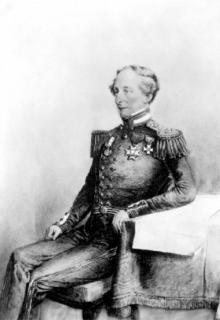 Which was exactly what Britain’s governor of the Vancouver Colony wanted. He grew tired of the impasse, and ordered British Rear Admiral Robert Baynes to send his marines ashore and start shooting.
Which was exactly what Britain’s governor of the Vancouver Colony wanted. He grew tired of the impasse, and ordered British Rear Admiral Robert Baynes to send his marines ashore and start shooting.
To his immense credit, Baynes was the only person involved in this comedy who had a lick of common sense. He refused the order, saying it was “sheer foolishness for two great nations to go to war over a squabble about a pig.” (I couldn’t have put it better myself.)
By the time news of the crisis reached Washington and London, diplomats on both sides were appropriately horrified. Neither nation wanted a war (especially the U.S., which was teetering on the verge of civil war).
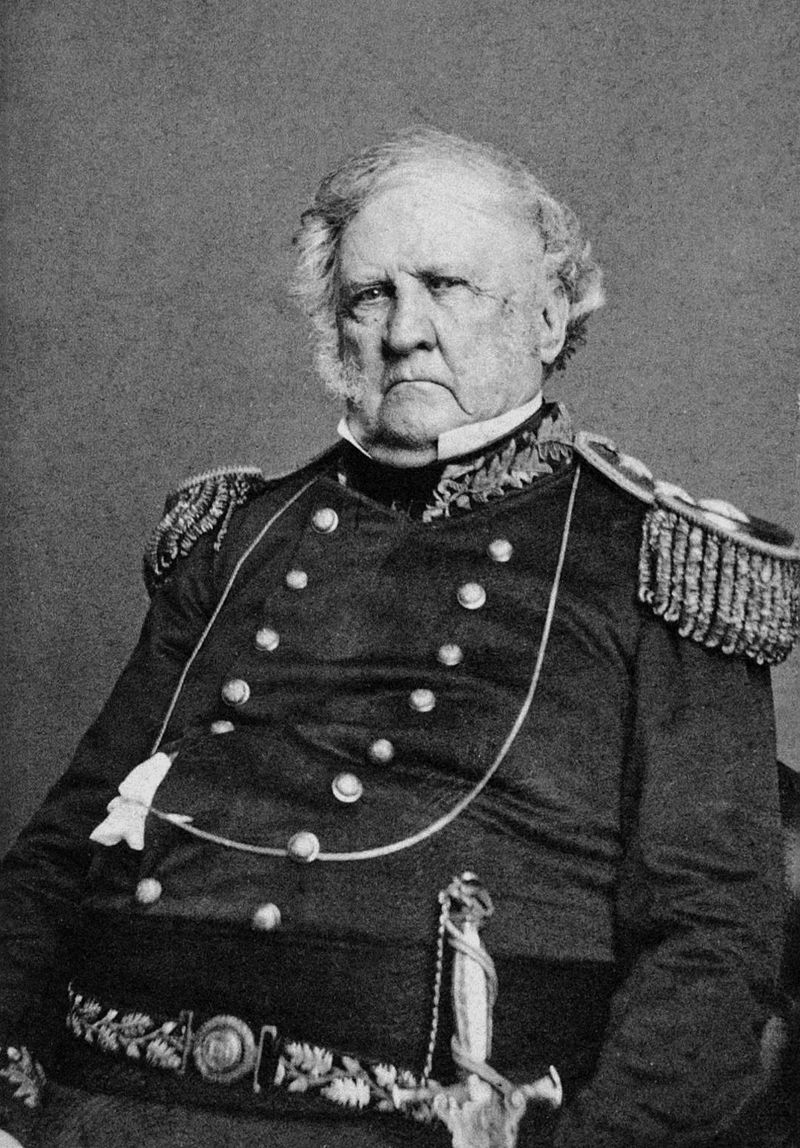 President James Buchanan hurried the spectacularly fat Lieutenant General Winfield Scott, hero of the Mexican-American War and a failed presidential candidate, to negotiate. Scott got everyone to simmer down. Then he persuaded both sides to withdraw the bulk of their troops, with each leaving behind a 100-man token force. They stayed in the British Camp on the north side of the island, and in the American Camp on the south side.
President James Buchanan hurried the spectacularly fat Lieutenant General Winfield Scott, hero of the Mexican-American War and a failed presidential candidate, to negotiate. Scott got everyone to simmer down. Then he persuaded both sides to withdraw the bulk of their troops, with each leaving behind a 100-man token force. They stayed in the British Camp on the north side of the island, and in the American Camp on the south side.
Tensions evaporated as fast as they had appeared. Both sides once again got along famously, with the two camps holding athletic competitions and passing long, lonely evenings drinking together. (Alcohol, it appears, was the key factor in this rediscovered chumminess.)
In 1871, the U.S. and Britain agreed to settle a bunch of long-standing minor disputes with the Treaty of Washington. As for which country got to claim San Juan Island, the treaty called on Germany’s Kaiser to settle the matter. He passed the buck to a 3-man commission in Switzerland, which ruled in 1872 the island belonged to Uncle Sam. All American and British troops were withdrawn by 1874.
 This story affirms the fundamental truth in Robert Frost’s famous line, “Good fences make good neighbors.” Want to live in peace and harmony with the folks next door? Don’t let your pig root around in their garden.
This story affirms the fundamental truth in Robert Frost’s famous line, “Good fences make good neighbors.” Want to live in peace and harmony with the folks next door? Don’t let your pig root around in their garden.
One final bit of extremely obscure trivia is the legacy from this extremely obscure bit of American history. Some 150 years later, the restored British and American Camps are open to visitors at San Juan Island National Historical Park. It is the only place (apart from its embassy and consulates) where Britain’s Union Jack is prominently flown on American soil.
 We may have wound up with the island (and the pig, too); but somewhere right now, Admiral Baynes is smiling.
We may have wound up with the island (and the pig, too); but somewhere right now, Admiral Baynes is smiling.
Did you find this enjoyable or helpful? Please continue to join me each week, and I invite you to read Tell it Like Tupper and share your review!
Curious about Tell It Like Tupper? Here’s a chance to see for yourself. Take a sneak peek at a couple chapters in this free downloadable excerpt.

